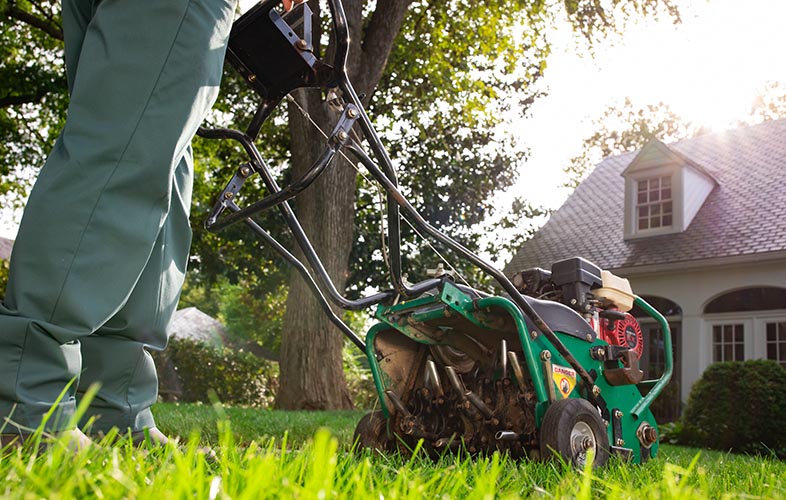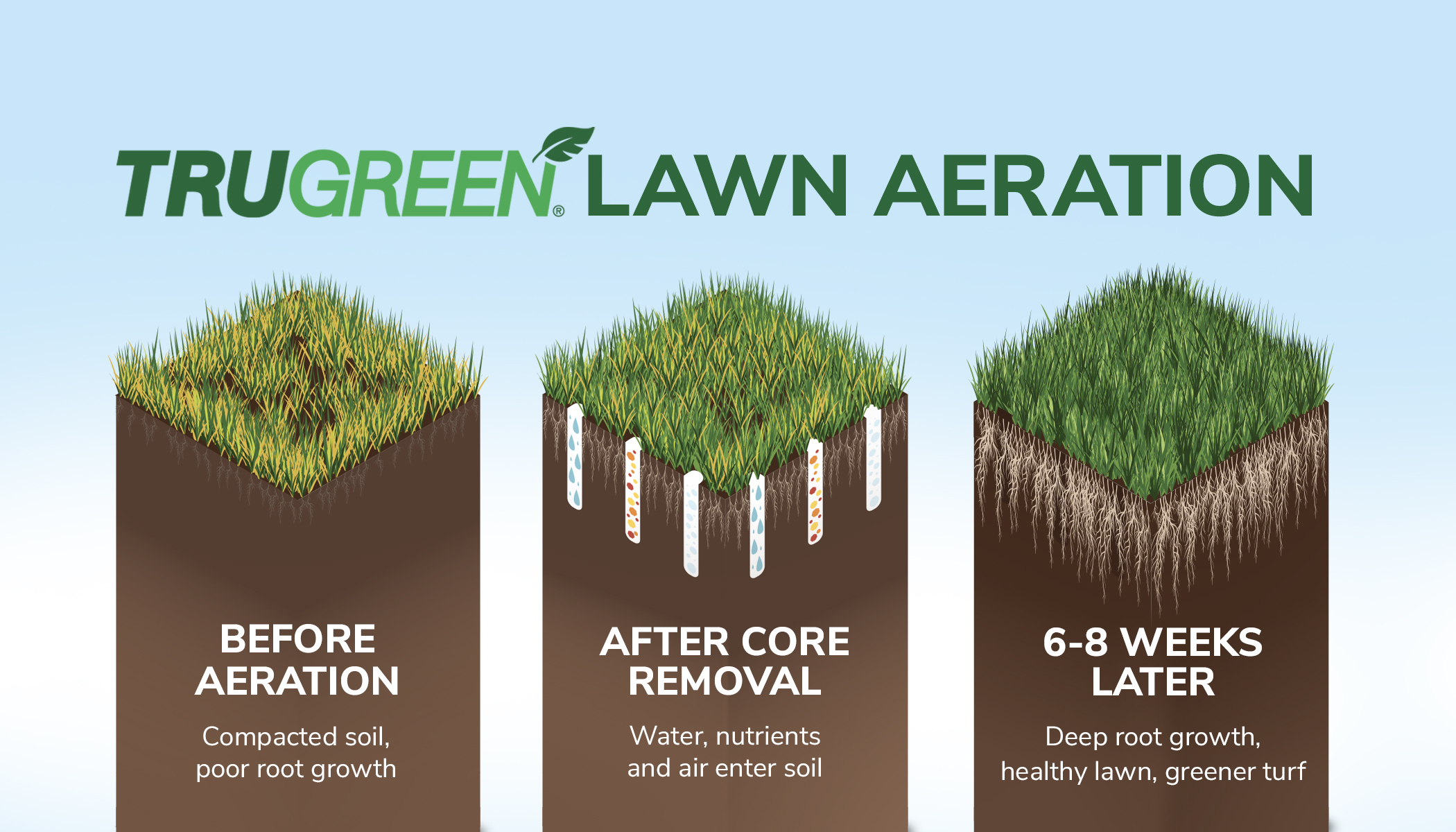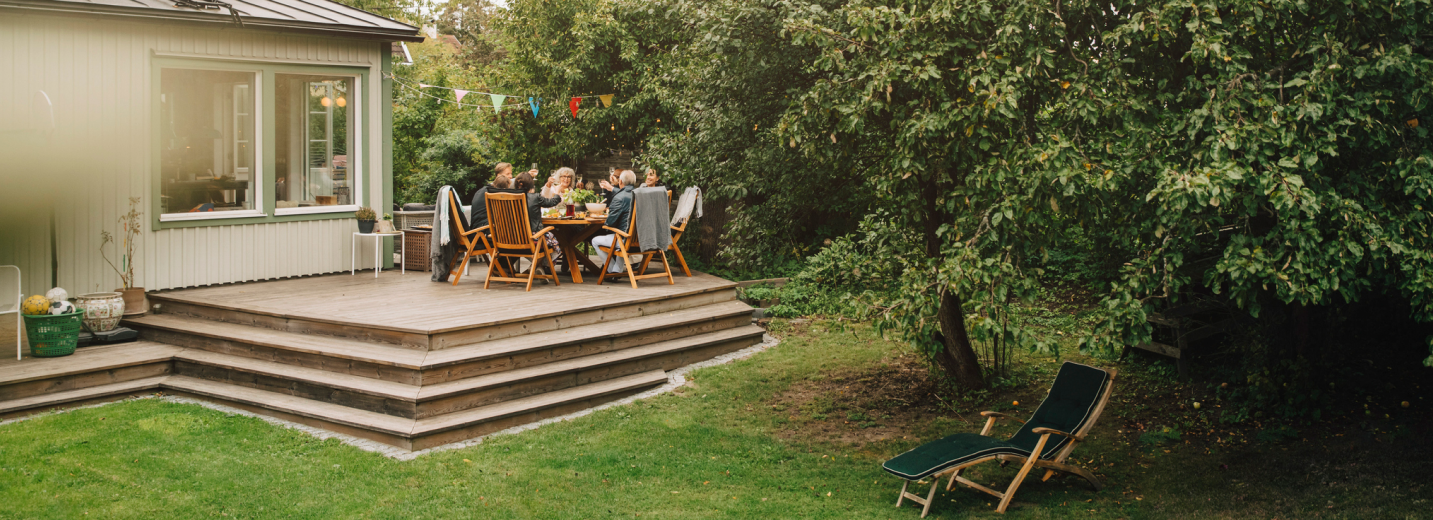1. Relieves soil compaction
Compacted soil can prevent air, water, and fertilizer from reaching your lawn’s root system, causing dead spots, patches and/or thinning. By removing cores in the aeration process, soil density is decreased, thus relieving compaction.
2. Aids in thatch management
Thatch is a layer of dead and difficult to decompose grass roots and stems that accumulates in your lawn. It can build up to a thick layer, robbing your grass of necessary moisture and nutrients. Excessive thatch is also an excellent home for insects and diseases. Several lawn-damaging insects thrive in an unmanaged thatch layer. Core aeration helps manage thatch build-up by physically removing the thatch to a manageable level as well as stimulating thatch-decomposing microbial activity in the soil.
3. Increases nutrient availability
Aeration allows air, water, and nutrients to penetrate the soil. When nutrients penetrate deeper into the root zone, they become available to the turf. Aeration also stimulates microbial activity that helps nutrients in the soil become available to your turf. This improves the effectiveness of your subsequent TruGreen fertilizations to promote a healthy lawn.
4. Benefits pH modification
Soil needs to have a pH around 6.5 for optimal growth. Nutrients like lime and sulfur can help correct your soil’s pH levels, allowing your turf to get more from lawn fertilization. Applying lime or sulfur after core aeration promotes the change of pH deeper into the soil profile, ensuring a stronger, healthier root system and lawn.
5. Builds a thicker lawn
Aeration stimulates root development and growth, but cool season grasses need overseeding to help fill in bare spots and thicken up the turf, which helps crowd out weeds come spring.
Overseeding alongside aeration enhances seed to soil contact necessary for germination and creates a moist, protected environment optimal for seedling growth and development. Plus, you’ll benefit from TruGreen’s specially selected grass seed, which offers improved disease and drought tolerance to help your lawn withstand changing conditions.
6. Reduced water runoff and puddling
One of the best ways to improve a lawn's drainage is to aerate it. To facilitate the easy movement of water, oxygen, and nutrients to the roots, the lawn must be perforated. If you find your yard has runoff or puddling problems after a rain, aeration could be the fix you need.
7. Prepares grass for winter dormancy and a green spring
Before your cool-season grass goes dormant, make sure it’s in tip-top shape by pairing fall aeration with fall fertilization. Aerating prior to fertilizing will help the nutrients soak in more effectively for optimal results. Planning for aeration and fertilization in the fall gives cool-season lawns a better chance of recovering from summer heat and drought stress ahead of the first winter frost.


 Branch Finder
Branch Finder















 Back to all blogs
Back to all blogs

Facebook
X
Youtube
Copy Link
Email